With the launch of the SpaceX Demo-2 mission, the United States has achieved something it hasn’t done in nearly a decade: put a human into low Earth orbit with a domestic booster and vehicle. It was a lapse in capability that stretched on far longer than anyone inside or outside of NASA could have imagined. Through a series of delays and program cancellations, the same agency that put boot prints on the Moon and built the iconic Space Shuttle had been forced to rely on Russia to carry its astronauts into space since 2011.
NASA would still be waiting to launch its own astronauts had they relied on America’s traditional aerospace giants to get the job done. The inaugural flight of the Boeing CST-100 “Starliner” to the International Space Station in December was an embarrassing failure that came perilously close to losing the unmanned capsule. A later investigation found that sloppy software development and inconsistent testing had caused at least two major failures during the mission, which ultimately had to be cut short as the vehicle couldn’t even reach the altitude of the ISS, to say nothing of making a docking attempt. NASA and Boeing have since agreed to attempt another test of the CST-100 sometime before the end of the year, though a delay into 2021 seems almost inevitable due to the global pandemic.
But America’s slow return to human spaceflight can’t be blamed on the CST-100, or even Boeing, for that matter. Since the retirement of the Space Shuttle, NASA has been hindered by politics and indecisiveness. With a constantly evolving mandate from the White House, the agency’s human spaceflight program has struggled to make significant progress towards any one goal.
Post-Shuttle Plans
It’s often been said that the Space Shuttle was canceled without plans for a clear replacement, but the truth is quite a bit more complex than that. Less than a year after Columbia was tragically lost in 2003, President George W. Bush released his Vision for Space Exploration plan which would put NASA on a path to retiring the aging Shuttle fleet while retaining America’s launch capabilities and global lead in space exploration.
The plan directed NASA to complete primary construction of the International Space Station by 2010, at which point the Space Shuttle’s primary mission would be completed and the program could be wound down. Simultaneously, NASA was to develop the Crew Exploration Vehicle: a more traditional capsule that would be able to carry American astronauts to the Station, the Moon, and potentially even Mars. Test flights of this relatively simple vehicle were to begin by 2008, allowing sufficient time to bring it up to operational status by the time the Shuttle had flown its last Station assembly mission.
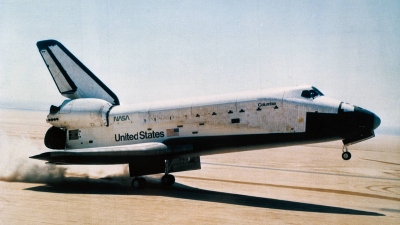
A key goal of the Vision for Space Exploration was the separation of crew and cargo. The Space Shuttle was an attempt to combine a crew transportation vehicle and heavy-lift booster into one reusable package, but the end result was a vehicle that never truly excelled at either task. It was too large and complex to merely ferry personnel to the International Space Station, but at the same time, its unique design and operational parameters limited the types of payloads it could realistically carry.
Put simply, the White House felt the Space Shuttle was a failed experiment that had not only cost the lives of fourteen American astronauts, but consumed too much of NASA’s budget and resources. The Vision for Space Exploration aimed to put NASA back on a safer and more sustainable path, with the eventual goal of leaving Earth orbit behind and returning to the Moon by 2020.
The Constellation Program
In response to the President Bush’s Vision for Space Exploration, NASA developed the Constellation program in 2005. It consisted of two separate rocket boosters, one intended to carry a human-rated spacecraft, and the other a heavy-lift vehicle that had eight times the cargo capacity of the Space Shuttle. Under the new program, large spacecraft bound for the Moon or Mars would be launched ahead of time on the larger rocket, and its crew would ride to space in the smaller rocket and meet up with it in orbit.
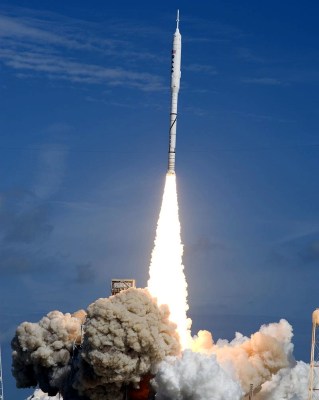
The program also called for the development of the Orion capsule and Altair lunar lander, both of which would be heavily influenced by their Apollo-era counterparts. There were even plans to use a modernized version of the Rocketdyne J-2 engine used on the Saturn V rocket, though modern safety requirements lead to this idea being dropped fairly early on.
Unfortunately, the Constellation program was plagued with delays and cost overruns. Part of the problem was that NASA still had to fund and operate the Space Shuttle and the International Space Station, which put an enormous strain on the agency. Taking money and engineers away from the Shuttle program while it was still carrying astronauts could have lead to another disaster, so it’s little surprise that Constellation was never a top priority.
In 2009, NASA performed a test flight of the Ares I-X, a prototype of the human-rated booster rocket designed to carry the Orion capsule into low Earth orbit. While the flight was a success, it would be the only piece of Constellation hardware to ever fly. With inert mock-ups standing in for the upper stage and crew capsule, the incomplete Ares I-X ultimately became a symbol of how little progress the Constellation program had actually made since its inception.
Commercial Crew Takes Over
By this point the White House was now occupied by President Barack Obama, and as is often the case when the Administration changes hands, the new leadership was looking to cut costs and streamline operations. Reviews ordered by President Obama concluded that completing the Constellation program would cost at least $150 billion dollars, and even then, a return to the Moon or a mission to Mars in the foreseeable future was unlikely. Based on these findings and what he called a “lack of innovation”, he officially canceled the program in 2010; a year before the Space Shuttle was scheduled to make its final flight.
Looking for a more modern and agile approach to delivering cargo and crew to low Earth orbit, the Obama Administration made a hard push for involving commercial operators into NASA’s operations. Money was specifically allocated for the new Commercial Crew Development (CCDev) program, which was tasked with finding companies that could design, build, and operate their own human-rated spacecraft.
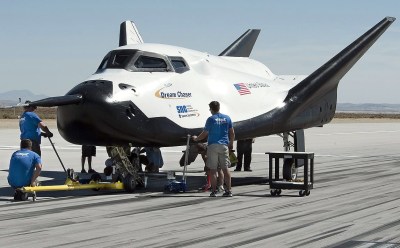
Boeing’s CST-100 was among the first wave of vehicles to receive funding through the CCDev program, as was Sierra Nevada’s Dream Chaser spaceplane. As a contingency, development of the Orion crew capsule would be allowed to continue should NASA’s new commercial partners fail to produce a workable vehicle.
With the retirement of the Space Shuttle looming, it was clear that America would have to rely on Russia’s spacecraft to bring astronauts to the International Space Station, but this was seen as a temporary measure.
When the second phase of the CCDev program started in 2011, Boeing was confident the CST-100 could begin crewed test flights in 2014, and NASA believed Orion would be ready for operational flights to the ISS by 2016.
Dragon Rising
While NASA and its traditional aerospace partners were dealing with the realities of going back to the drawing board for a human-rated spacecraft, SpaceX had already put their Dragon capsule into low Earth orbit with a homegrown booster and were preparing for their first cargo mission to the International Space Station. SpaceX had been awarded funds through the cargo-only version of CCDev, known as Commercial Orbital Transportation Services (COTS), and was quickly making a name for themselves.
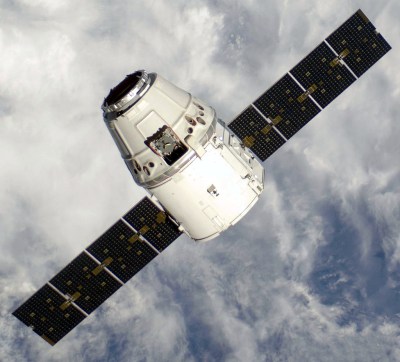
So when the third phase of CCDev opened up in 2012, SpaceX was considerably ahead of the game. Not only was a version of their proposed spacecraft complete and already flying, but they were unique among all the CCDev entries in that they had also developed their own booster rocket to carry their vehicle into space. This vertical integration was not only the key to SpaceX’s vastly reduced operating expenses, but enabled a rapid iterative design process that their competitors simply couldn’t match.
NASA officially selected SpaceX as one of their Commercial Crew partners in 2014, and they were awarded $2.6 billion to develop a modified version of their Dragon cargo capsule for crewed missions with the expectation that they could have it tested and certified by 2017.
But the company still had to fulfill their cargo obligations under the COTS contact, which combined with the normal setbacks and delays that are to be expected when developing a human-rated spacecraft, pushed the first test flight of the new Crew Dragon to 2019.
Beginning of a New Era
Since the retirement of the Space Shuttle was officially announced, its nebulous replacement was perpetually a few years away from making its first flight. But even with an eight year head start, by the time Atlantis rolled to a stop for the last time, NASA had nothing to show for all the time and money spent chasing paper rockets. Despite over a decade of development, the CST-100 and Orion still haven’t started operational flights. The traditional aerospace industry failed to answer the call.
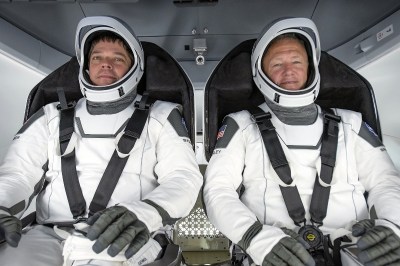
By carrying astronauts Robert Behnken and Douglas Hurley into space, SpaceX has officially brought a difficult chapter in NASA’s history to a close. It not only marks the end of the agency’s reliance on foreign hardware to conduct its human spaceflight mission, but proves that the old ways aren’t set in stone.
The dark horse soundly beat the entrenched giants, and the democratization of space has never been closer. It’s hard to predict what the next decade of human spaceflight will look like, but there’s no question it’s going to be a lot more exciting than the previous one.
No comments:
Post a Comment